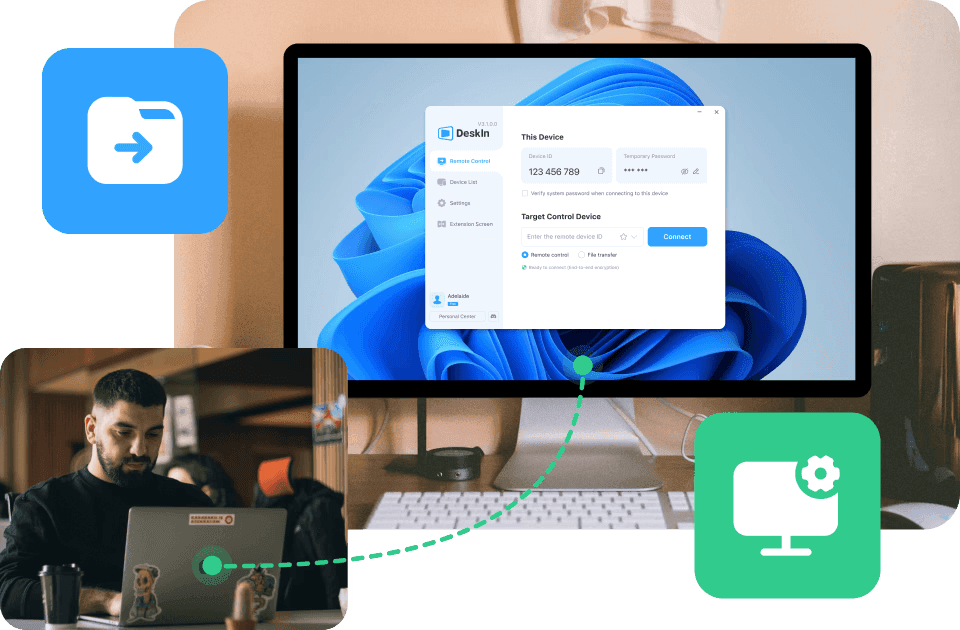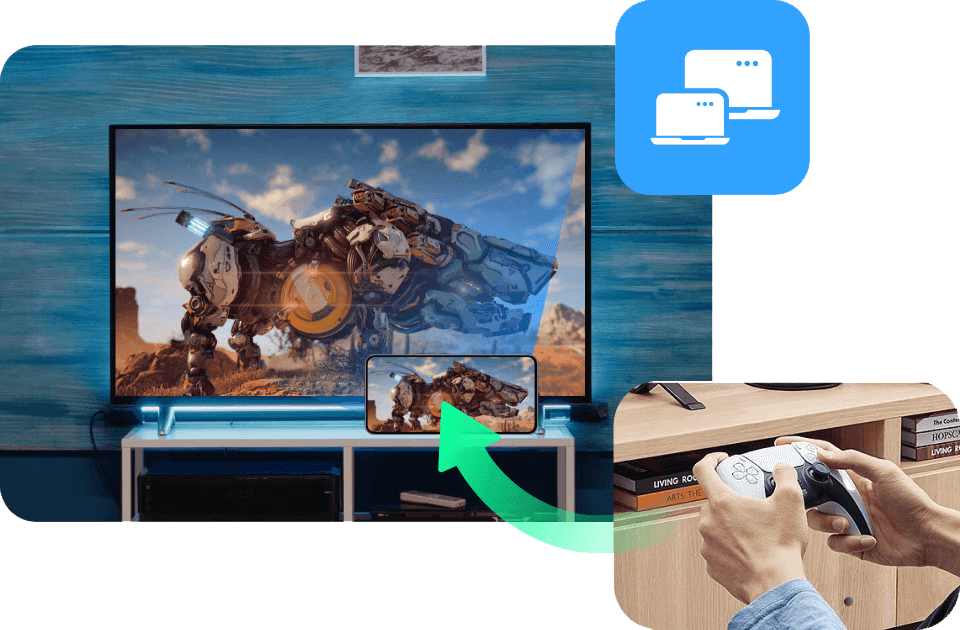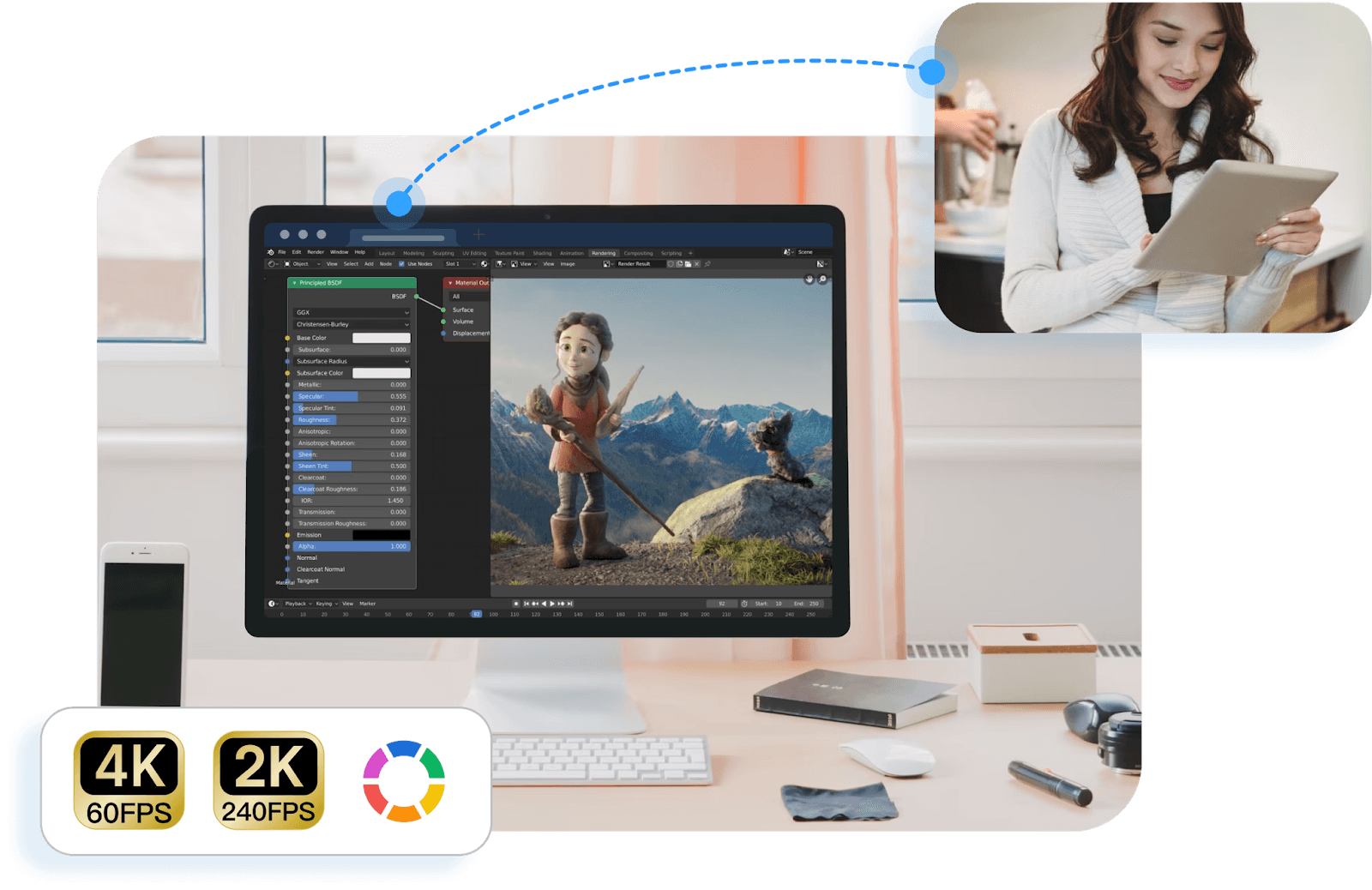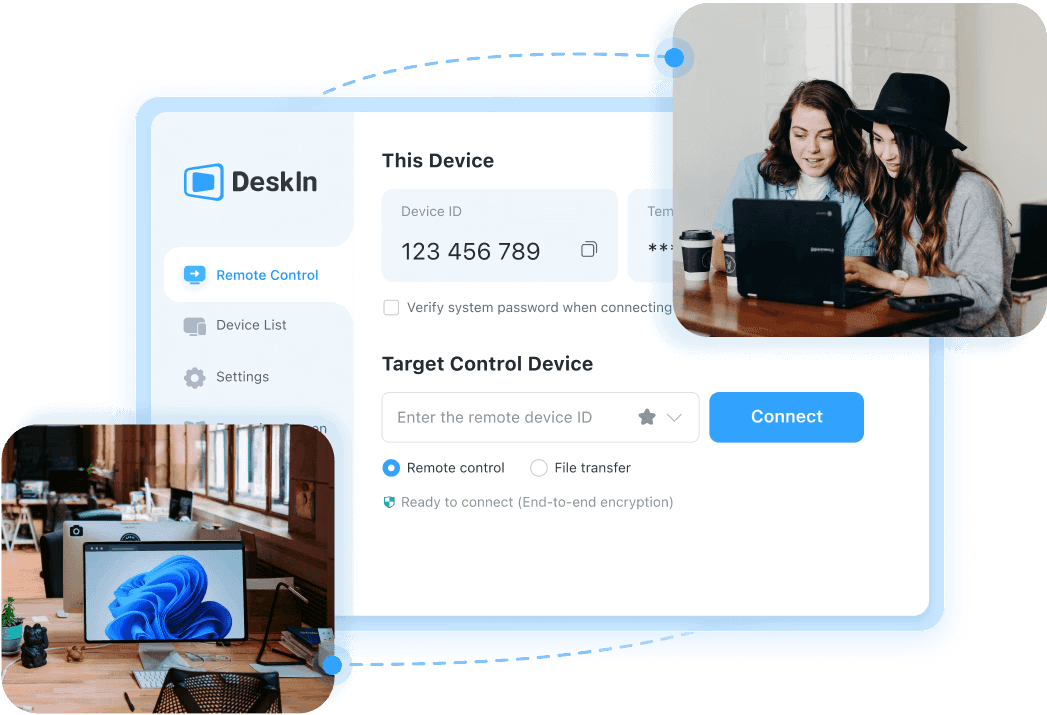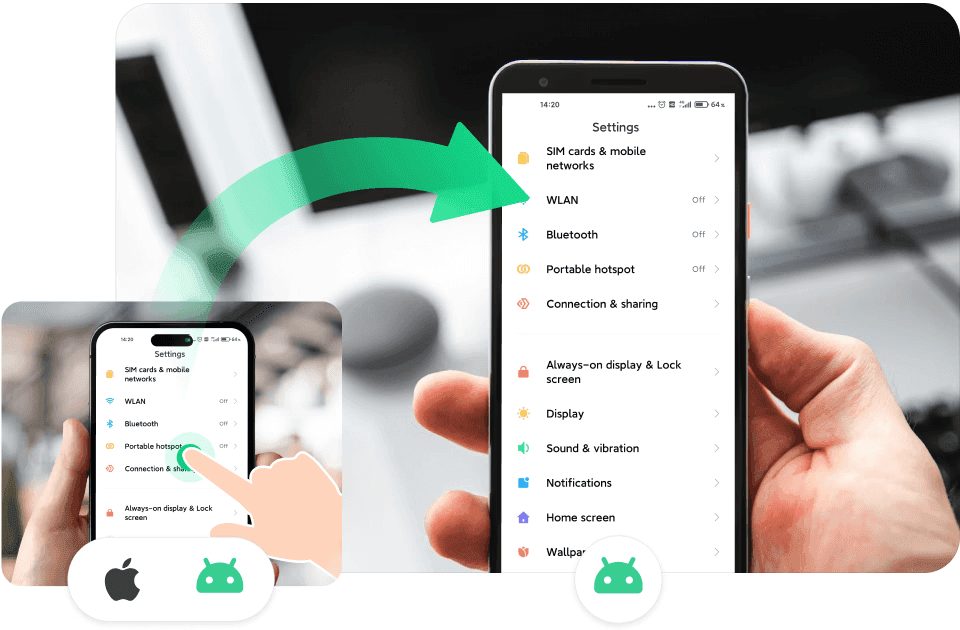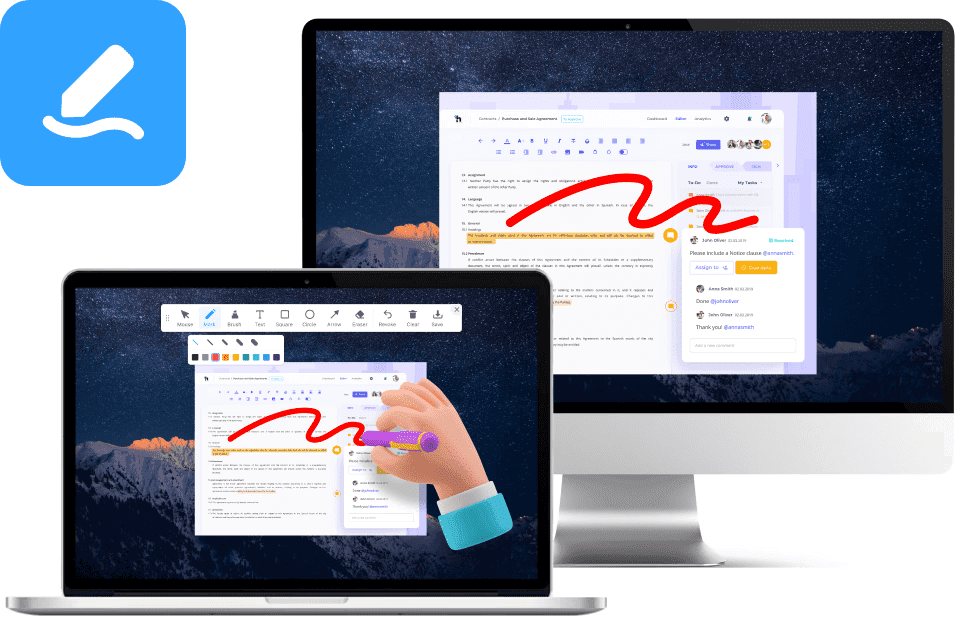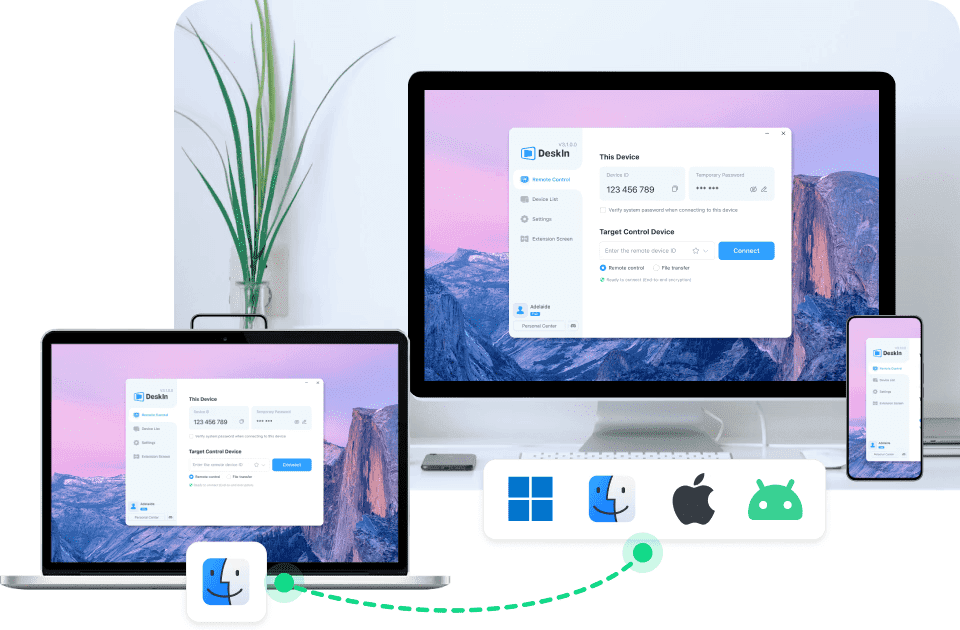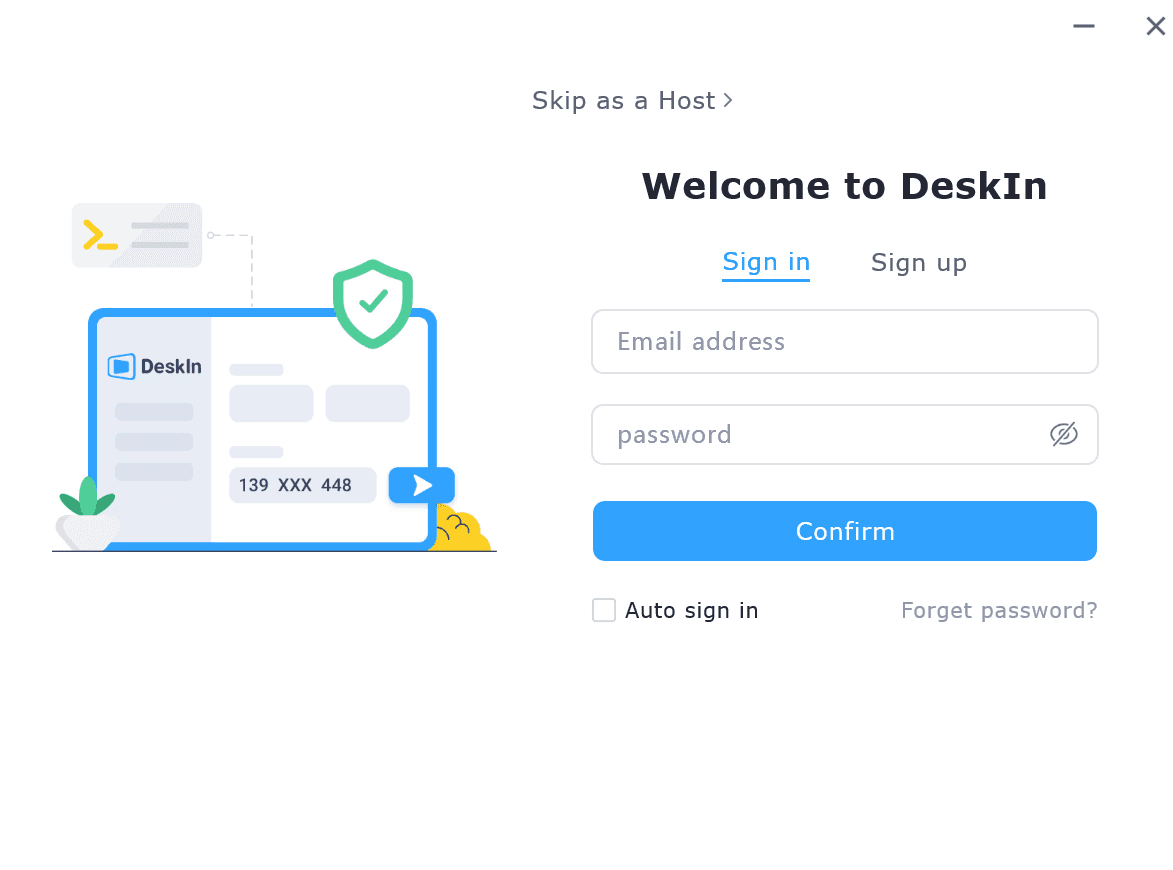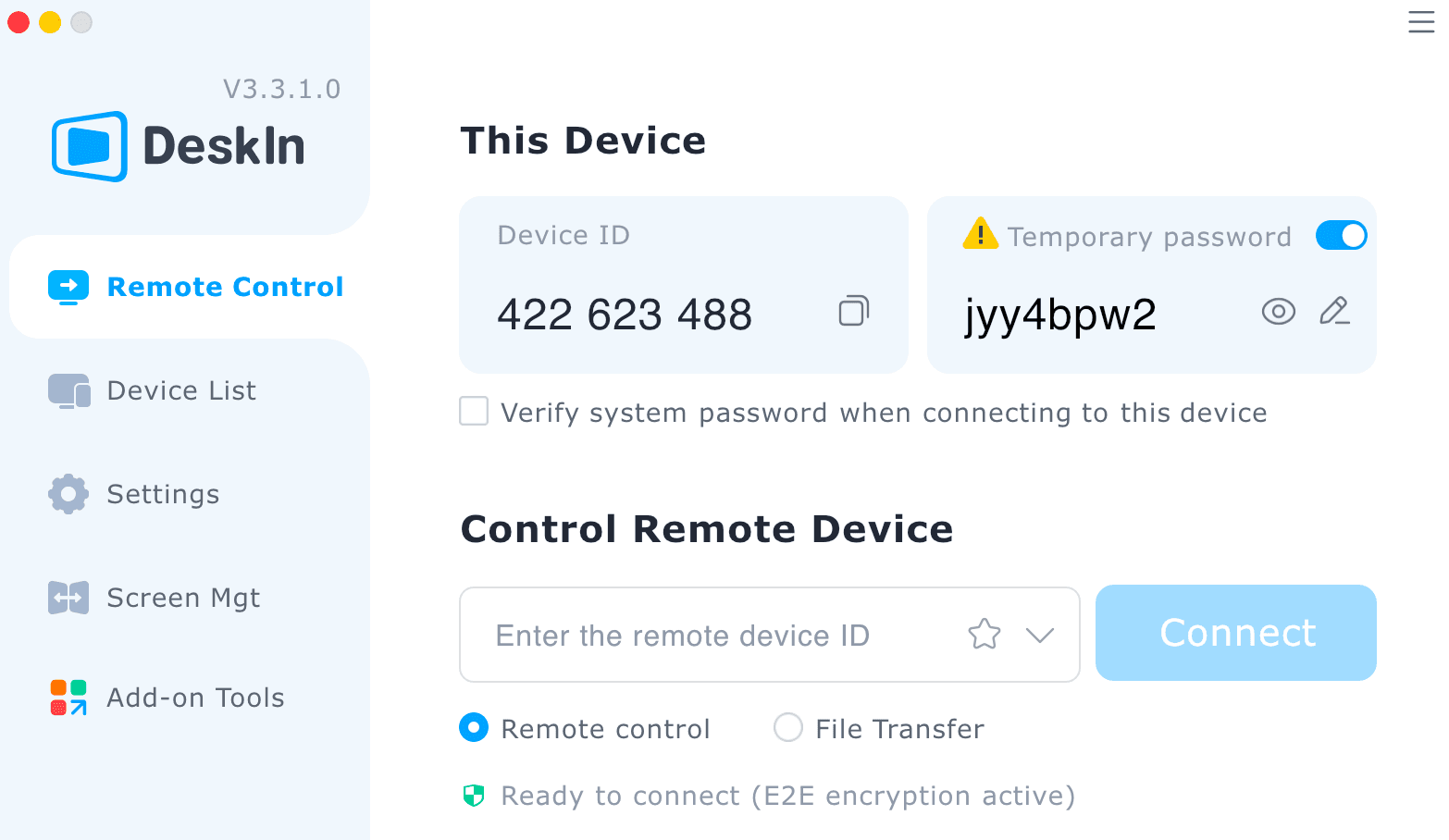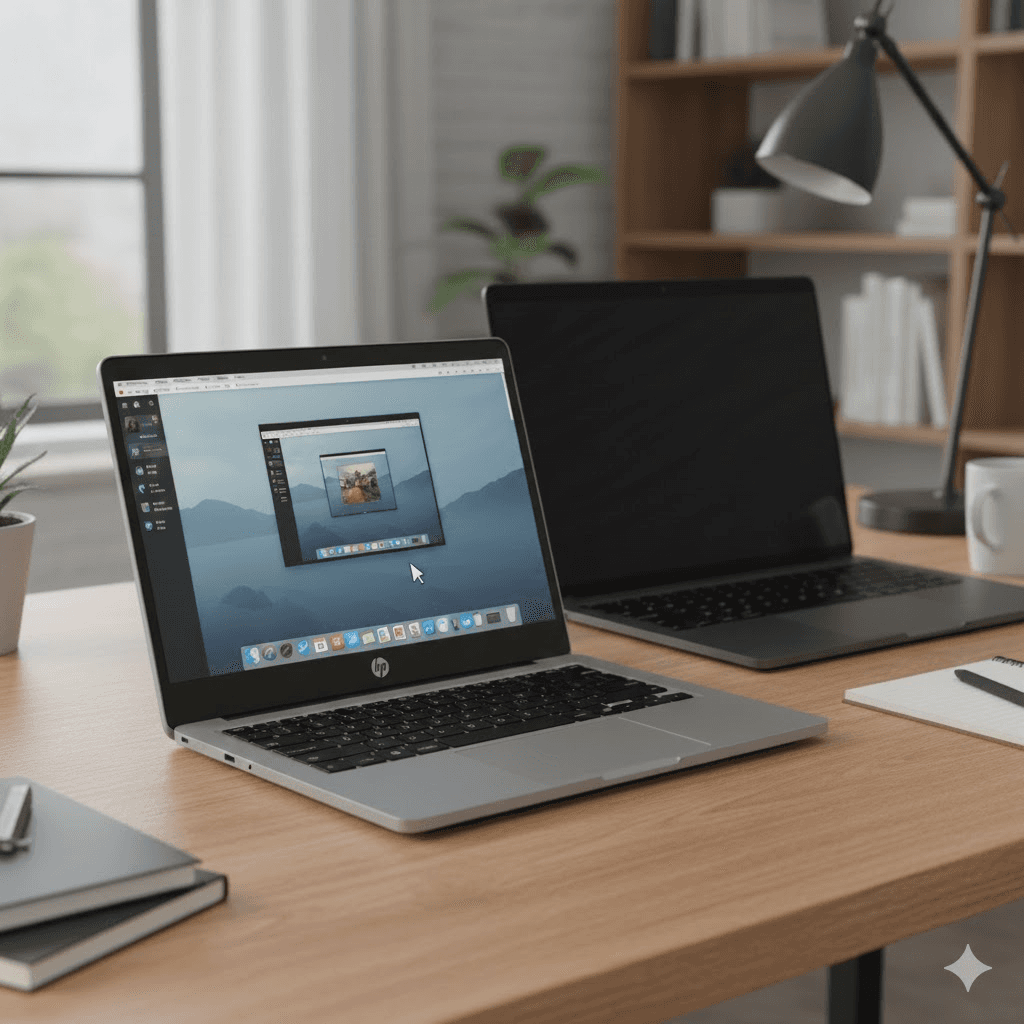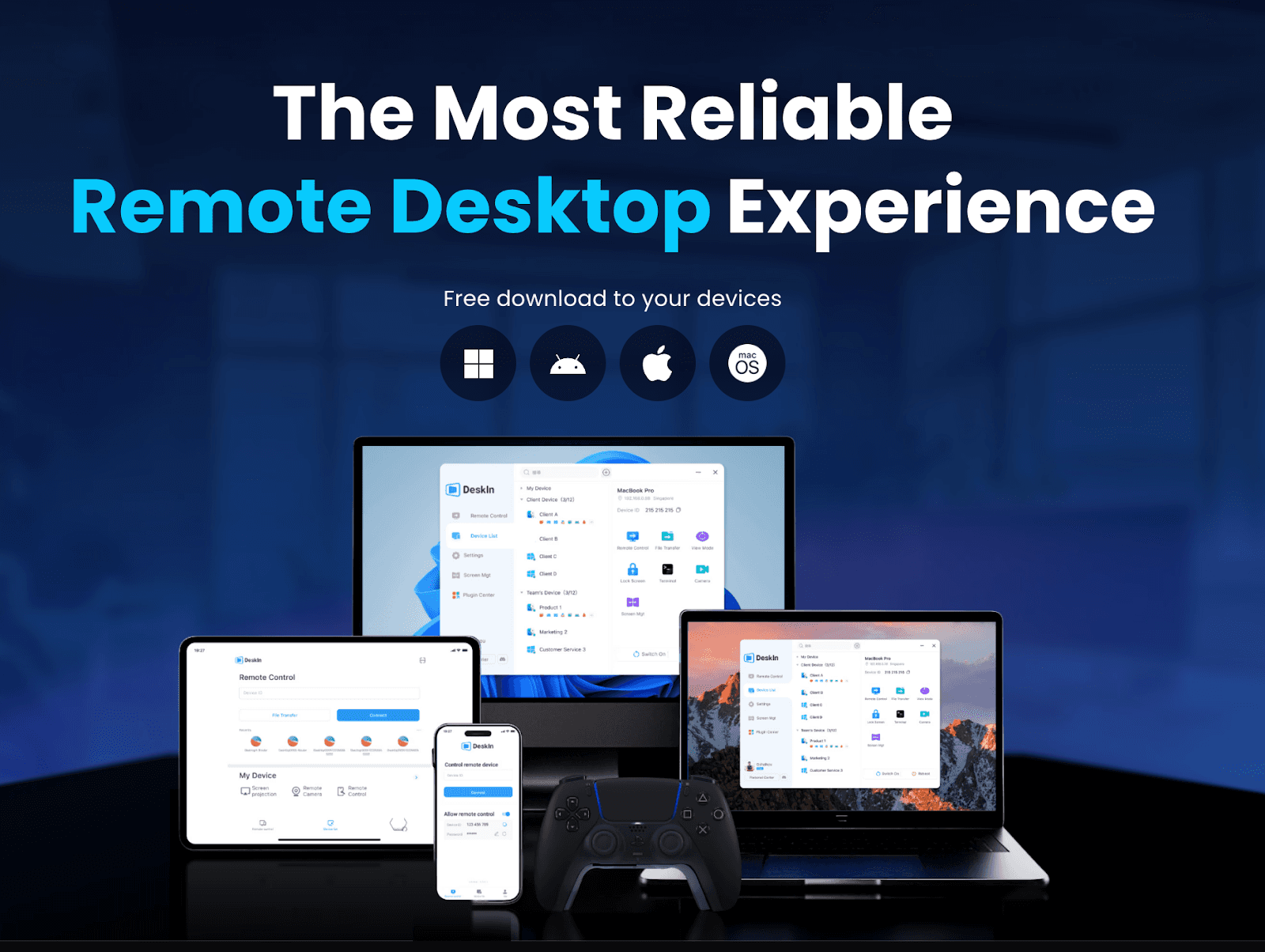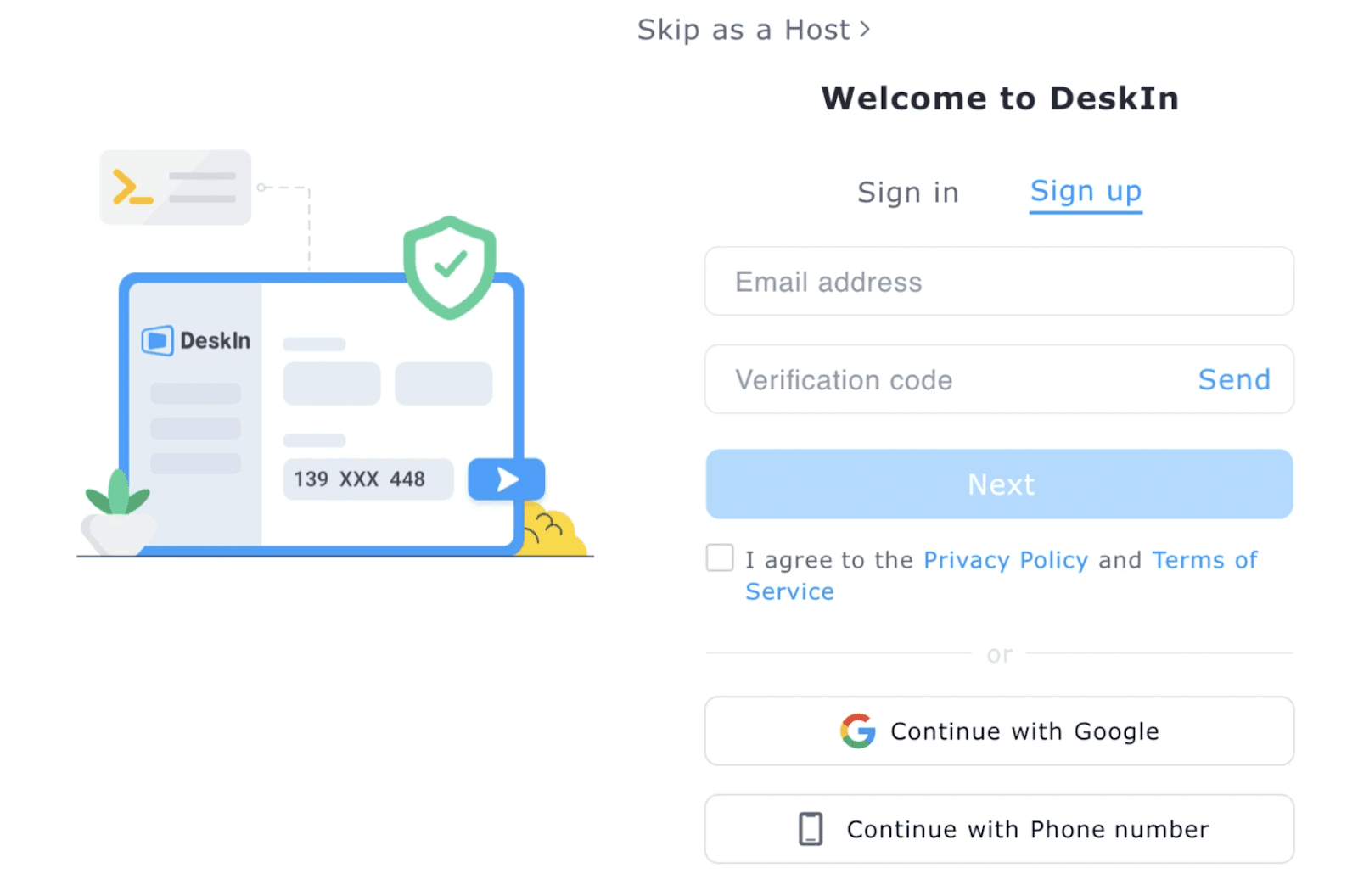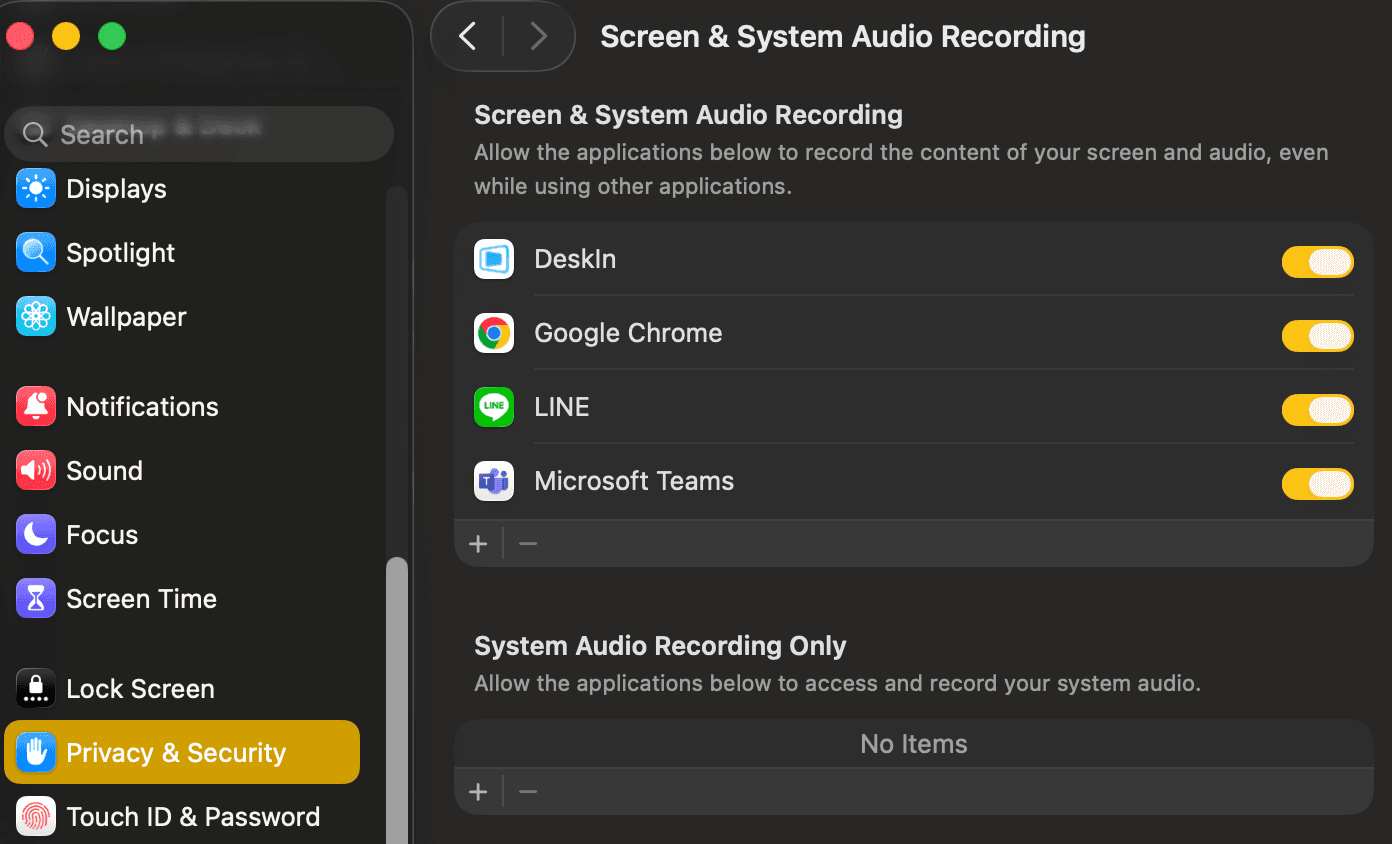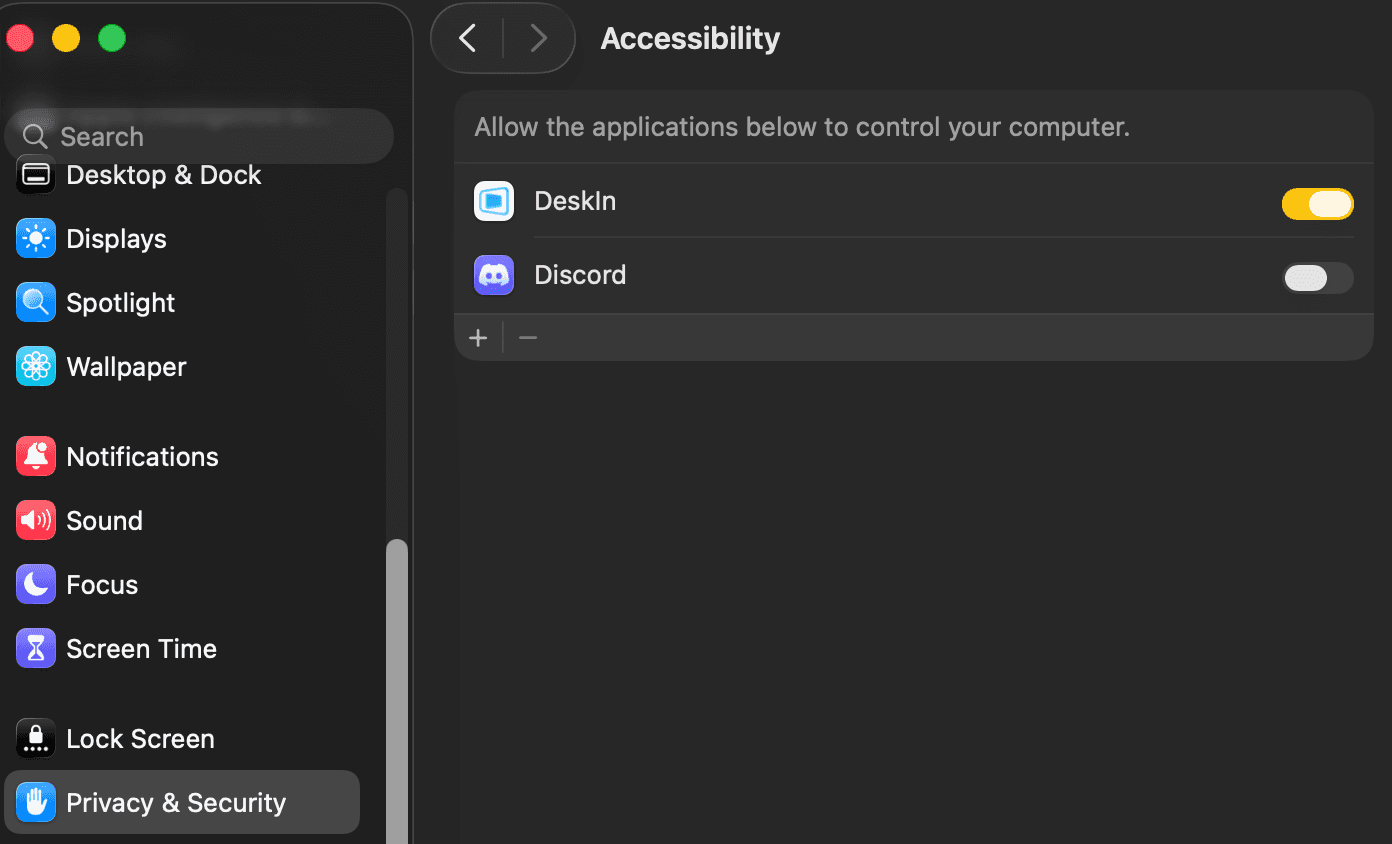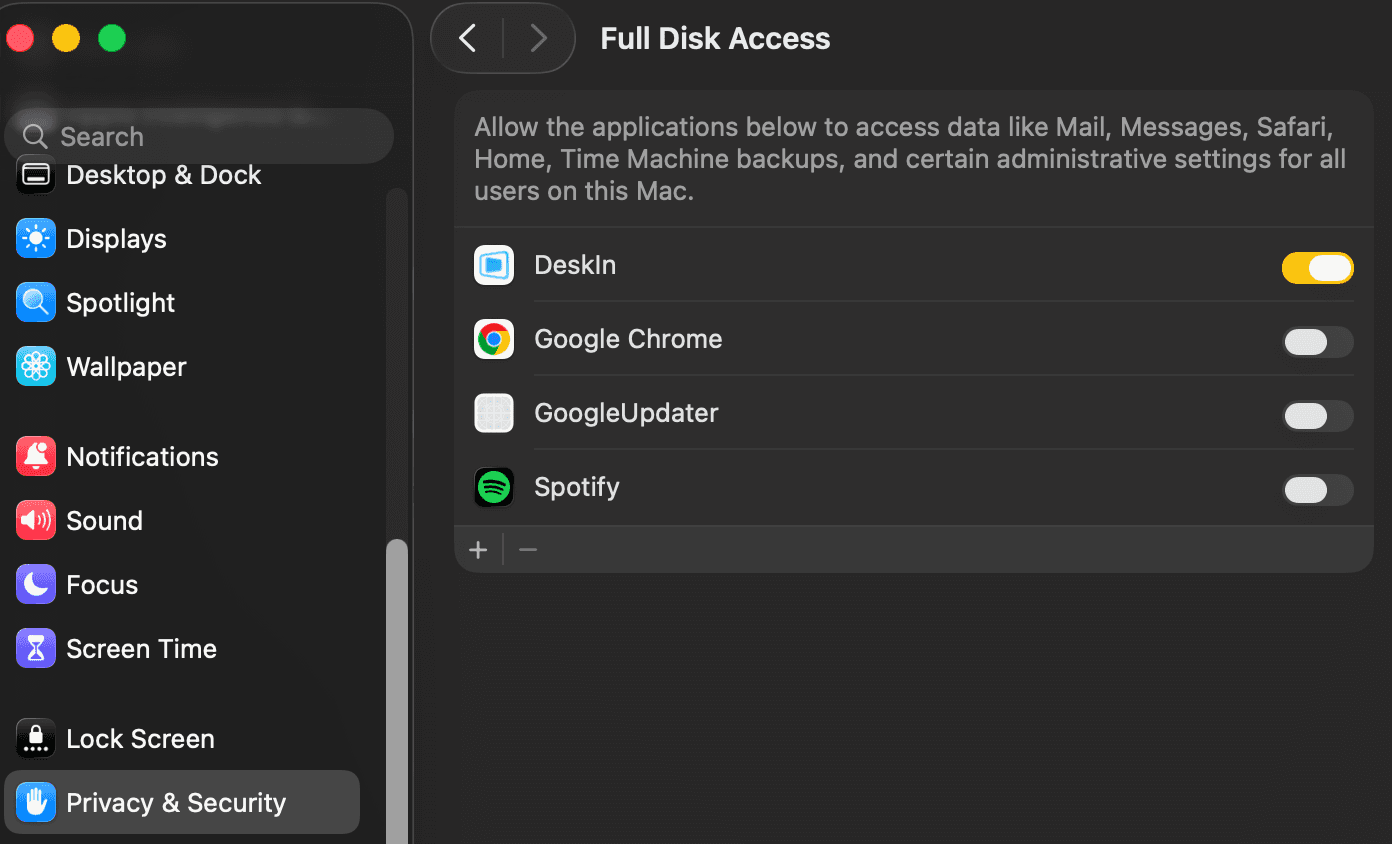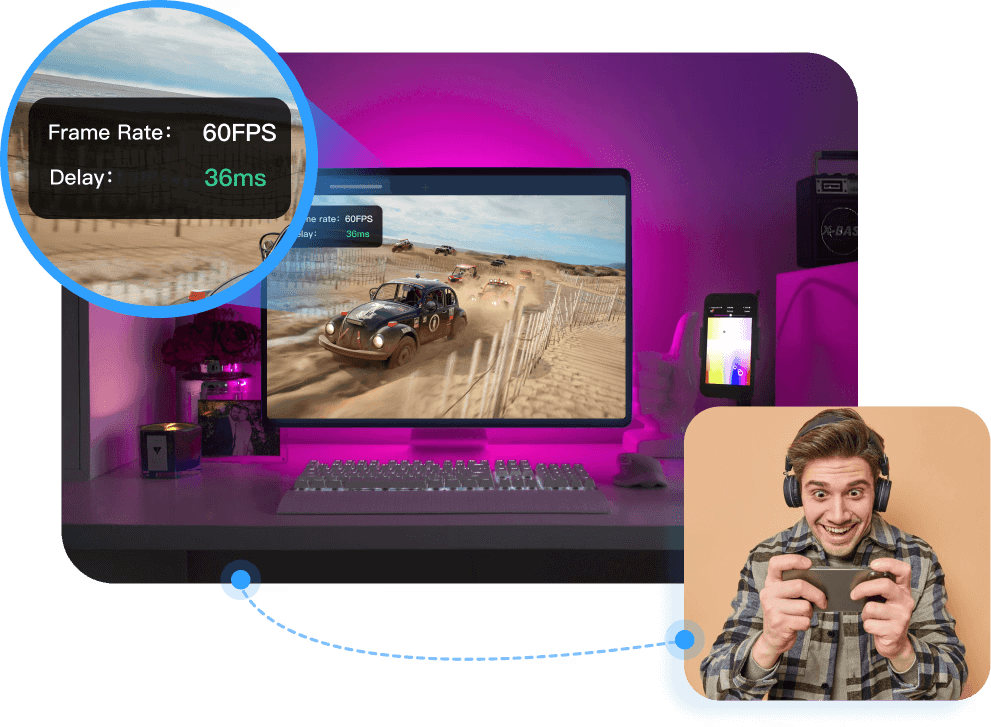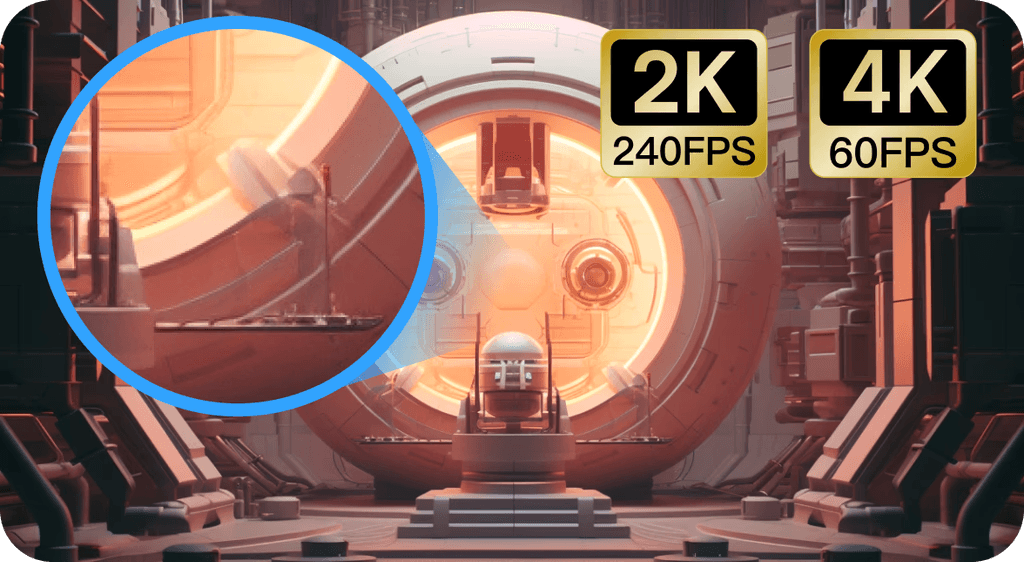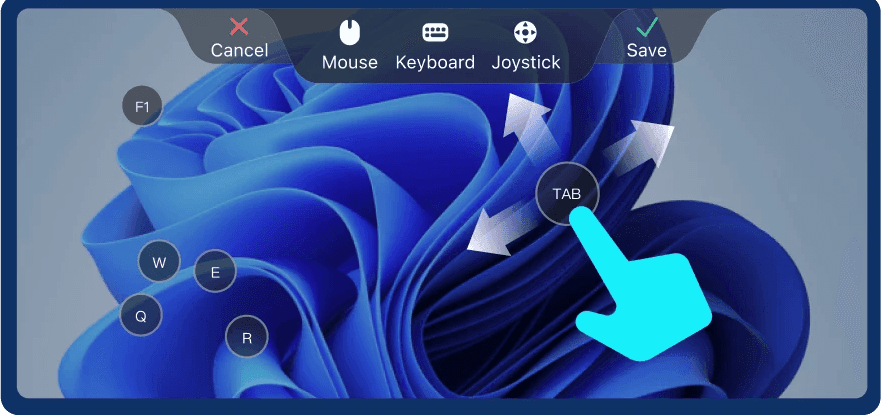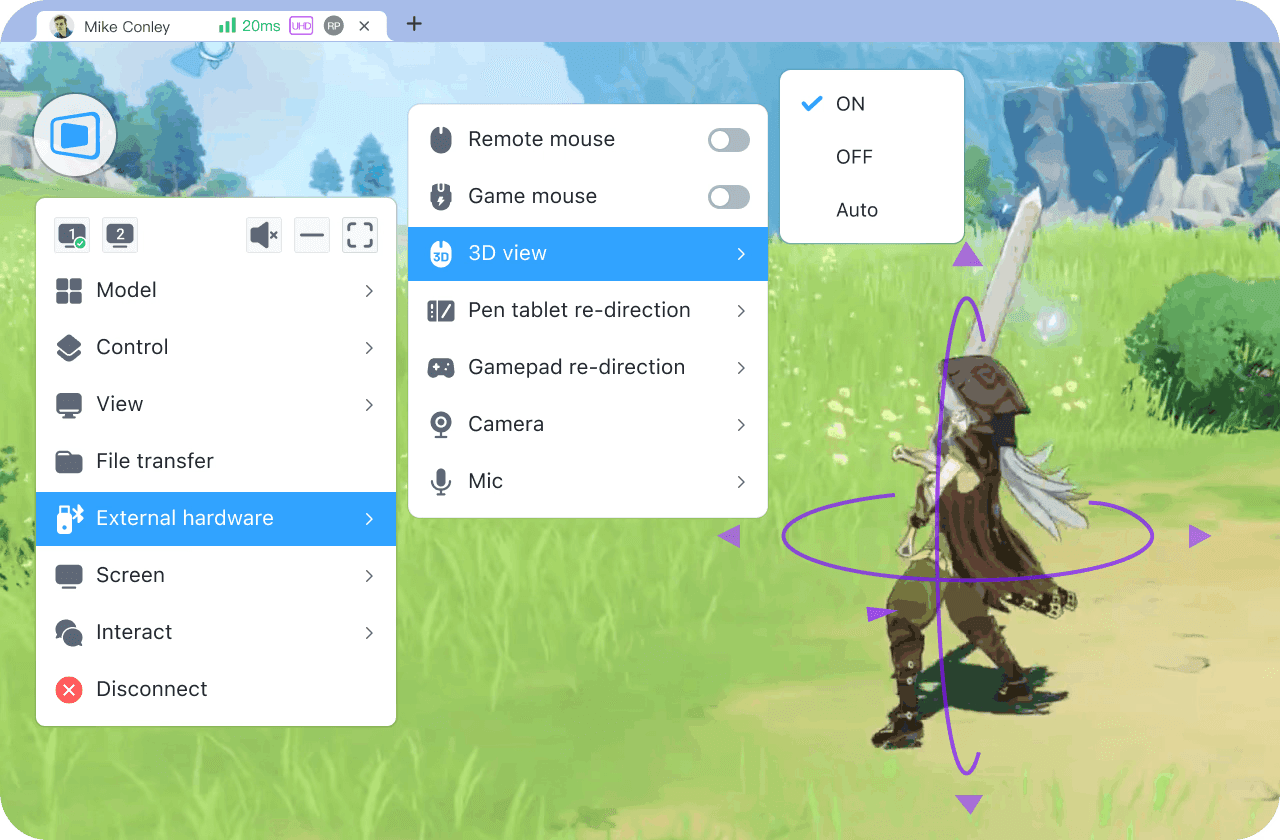As office professionals constantly juggling presentations and collaborative tasks, we've all struggled with figuring out how to screen mirror on Android efficiently. After testing countless tools, I've narrowed down five reliable screen mirroring apps that show how to share content across devices. Whether you need to mirror an Android phone to another phone during team huddles, project content onto a TV for client meetings, or troubleshoot a colleague's device remotely, these screen mirroring programs eliminate the hassle of cables and compatibility issues.
From wireless cross-device solutions to built-in Android features, each app caters to specific workflows while prioritizing simplicity and performance. Ready to streamline your presentations and boost productivity? Let's dive into these game-changing tools that turned my daily frustrations into seamless workflows.
Quick Comparison: Best Ways to Screen Mirror Android Devices
Seeking the top Android screen sharing app? For PC, iPhone, or Android-to-Android, try DeskIn.

Casting to Google TV? Use Chromecast. If your TV is online but not Google-branded, Samsung/OnePlus phones work great with native tools—others can go with ApowerMirror. No WiFi? HDMI cables or Miracast dongles have you covered.
Tool | Pros | Cons | Easy to Use | Best For |
DeskIn |
|
| ⭐⭐⭐⭐⭐ | PC/iPhone/Android/macOS mirror |
Chromecast |
|
| ⭐⭐⭐⭐ | Google TV users |
ApowerMirror |
|
| ⭐⭐⭐⭐ | Non-Google smart TVs |
HDMI Cable / Miracast Dongles |
|
| ⭐⭐ | No WiFi environments |
Samsung/OnePlus Native Screen Tool |
|
| ⭐⭐⭐⭐ | Samsung/OnePlus phone users |
Scrcpy / Vysor |
|
| ⭐⭐ | Advanced users/developers |
Method 1: Screen Mirror Android to PC/Android/iOS in Minutes via DeskIn
For a team that frequently handles cross-platform tasks, we highly recommend DeskIn for its versatile screen mirroring tool capabilities.

Whether we're rushing through airport Wi-Fi or prepping last-minute edits at home, DeskIn lets you instantly display mirroring Android devices, iPhones, or laptops to any screen — now with built-in voice calling for real-time collaboration.
Need to mirror Android to PC during a client demo? A single click shares your phone interface on a desktop with near-zero lag. Surprisingly affordable—costing a third of competitors—it supports Windows, macOS, iOS, and Android. The free version covers basic mirroring, while paid plans add multi-device management, voice chat, Android remote control, and file transfer across platforms. For teams juggling mixed ecosystems, DeskIn bridges gaps without breaking budgets.
Why Choose DeskIn for Wireless Cross-Device Screen Mirroring:
4K Ultra HD & 40ms Low Latency: Crystal-clear visuals for design reviews and smooth real-time control.
Cross-Platform Mirroring: Wirelessly extend screens between Android, iOS, Windows, and Mac devices (like connecting two Android phones remotely within Samsung's ecosystem).
Secure 256-bit Encryption + Access Controls: Whitelist devices and lock screens during sensitive presentations.
Live Annotation & Shared Clipboard: Mark up shared screens and sync text/files across devices instantly.
Built-in Voice Calling: Collaborate with teammates or clients through real-time audio while sharing your screen.
Related Readings
Use DeskIn to Wirelessly Mirror an Android Screen to a PC
Need to share your Android screen during a team call or troubleshoot a colleague's device? DeskIn simplifies how to clone an Android phone display to a PC in seconds. Let's break down the quick steps to get started.
Step 1. Download and Install DeskIn
Go to the official DeskIn website on both your Android phone and your PC. Download the appropriate version for each device and complete the installation process.


Step 2. Create and Sign In to Your DeskIn Account
Open the DeskIn app on both devices and sign in using the same account. If you're new, register using your email address — you'll need to verify it for security.
Step 3. Link Devices and Choose Connection Mode
Once signed in, you'll see the device ID and the password of your Android device. Insert them on your PC, and once they are successfully connected, you can mirror your screen in real-time.

Step 4. Start the Connection
Follow the prompts to initiate the session. DeskIn will automatically establish a secure connection. Depending on your needs, you can enable additional features such as message, voice call, or whiteboard within the app settings.
These tools seamlessly integrate with screen mirroring, allowing you to present documents, demo designs, or collaborate in real time during client meetings. Enhance your discussions by switching between shared screens and interactive whiteboards for dynamic feedback. Hurry up and download DeskIn, the best free screen mirroring app, to simplify your workflow!

Method 2: Mirror Android to Google TV with Chromecast Built-in
If your TV is a Google TV, using the built-in Chromecast is a perfect solution for Android cast to TV. It requires no extra hardware, offers excellent stability, supports up to 4K resolution, and works seamlessly with apps like YouTube and Netflix. However, full-screen mirroring may not work for some DRM-protected content (e.g., certain Netflix, Disney+ titles), and older Android phones or TV models might not support smooth or high-res casting.
For non-Google TVs, you'll need a separate Chromecast device—priced at $30 for HD and $50 for 4K. If you're okay with these minor drawbacks and already own a Google TV, this method is ideal. Cast videos on TV with ease—read on to learn how!
Cast Android Screen to Google TV (Chromecast Enabled)
Step 1. Enable Screen Cast
Swipe down from the top of your Android phone to open the Quick Settings panel. Tap the "Cast" or "Screen Cast" icon. Make sure your phone and Google TV are on the same Wi-Fi network.
Step 2. Select Your TV Device
From the list of available devices, tap the name of your Google TV or Chromecast. When prompted, confirm by tapping "Start Now" to begin screen casting.

Step 3. Mirror and Adjust Your Screen
Your phone screen will now appear on the TV. Open any app, video, or content you want to display, and rotate your phone to portrait or landscape mode as needed. To stop casting, tap the Cast icon again and select Disconnect.

Method 3: Mirror Android to TVs or PCs with ApowerMirror
When we need to screen mirror Android phones directly to a smart TV, ApowerMirror is a reliable and flexible option. Whether you're mirroring a colleague's phone for remote demos or figuring out how to screen mirror on an Android phone during meetings, ApowerMirror makes the process smooth. It supports wireless Android phone to TV casting with low latency, making real-time interaction feel natural.
Unlike basic tools, ApowerMirror allows both wireless and USB connections, making it ideal for users with unstable Wi-Fi. It's a great solution for those wanting to cast the Android screen to TV without Chromecast, offering HD quality for free users and unlocking screen recording, dual control, and more in its paid plan. If you're looking for a simple way to screen mirror Android to your TV, this tool is worth a try.
Screen Mirror from Android to TV via ApowerMirror
When our team needs to share an Android screen with a TV for presentations or stream games at home, ApowerMirror delivers hassle-free Android screenshare.
Step 1. Connect your Android phone and TV to the same LAN.
Step 2. Download the ApowerMirror app on your Android phone.
Step 3. Run the app on your phone and tap the blue mirror button. Search for your TV and then tap the name of your TV. You can also scan the QR code on your TV to connect.

Method 4: Mirror Android to TV Without WiFi or Apps
No WiFi? No problem. If you don't want to download any apps and happen to have an HDMI cable or Miracast dongle at home, this method is perfect for casting pre-downloaded videos from your Android phone to the TV without WiFi. It's ideal for offline use, offering low latency, better privacy, and a plug-and-play setup in many cases.
While Android phone to HDMI cable or Android screen mirroring with USB cable methods may require extra hardware and offer limited functionality, they're reliable and simple. If all you want is to watch local videos on a big screen, this is the way to go—keep reading to learn how to set it up!
Requirements:
Android phone with USB-C port supporting video output (DisplayPort Alt Mode)
USB-C to HDMI adapter or MHL adapter
An available HDMI port on your TV
Use HDMI Cable or Miracast Dongles for No-WiFi Casting
Step 1. Check Phone Compatibility
Confirm your Android phone supports video output via USB-C (DisplayPort Alt Mode). Not all phones have this feature.
Step 2. Connect the HDMI Adapter
Plug a USB-C to HDMI adapter into your phone, then connect it to your TV using a standard HDMI cable.

Step 3. Switch TV Input and Start Mirroring
Switch your TV to the correct HDMI input. Your phone screen should appear instantly on the TV—no apps or Wi-Fi required.

Method 5: Screen Share Android Phones to TV with Samsung/OnePlus Native Screen Mirror Tool
If you own a Samsung or OnePlus phone and want to mirror it to your TV without installing third-party apps, the built-in Screen Share tool is a great choice. This native screen share on Android feature allows you to mirror your screen directly to any Miracast-supported TV, making screen sharing with Android simple and fast—perfect for watching videos or showing content to others at home.
Because it's a system-integrated feature, there's no need to download extra apps, and unlike many third-party tools, it offers a smooth experience with no ads. It's especially effective for screen mirroring Samsung phones to Samsung TVs, delivering low-latency performance. Just note that both devices need to be on the same Wi-Fi network, and compatibility may vary with older or non-Miracast TVs. Still, for users in the same-brand ecosystem, it's one of the easiest ways to share your screen.
Use Samsung/OnePlus Native Screen Mirror Tool to Mirror Android to TV
How to Use Samsung Smart View to Mirror Android to TV
Requirements
Samsung phone with Smart View feature (Android 9+ usually supported)
Smart TV or display that supports Miracast (e.g., Samsung/LG TV, Windows PC)
Same Wi-Fi network for both phone and TV
Step 1. Connect your TV and Samsung phone to the same Wi-Fi
Ensure both devices are on the same wireless network. This is essential for detection and casting.
Step 2. Swipe down to open Quick Panel
Pull down from the top of your phone screen twice to reveal the Quick Settings panel.
Step 3. Tap on "Smart View"
Look for the "Smart View" icon. If it's not visible, tap the pencil/edit icon to add it to the panel.
Step 4. Select your TV from the list
The phone will search for nearby compatible devices. Tap your TV's name when it appears.
Step 5. Confirm the connection on the TV
Your TV might display a pairing prompt. Accept it to begin screen mirroring.

How to Use OnePlus Cast (Wireless Display) to Mirror Android to TV
Requirements
OnePlus phone with Cast/Wireless Display feature (Android 10+ recommended)
Smart TV that supports Miracast
Both devices must be on the same Wi-Fi network
Step 1. Open Settings on your OnePlus phone
Go to "Settings" > "Connection & sharing" or "Bluetooth & device connection" (varies by model).
Step 2. Tap on "Cast" or "Wireless Display"
Find the casting option and enable it. Some models require turning on "Wireless display" in the three-dot menu.
Step 3. Choose your TV from the list
Your phone will scan for nearby Miracast-enabled devices. Select your TV.
Step 4. Accept the prompt on your TV
Allow the connection request on your TV screen to begin mirroring.

Method 6: USB Screen Mirroring Android to Android or PC
For those without Wi-Fi or needing ultra-low latency, USB screen mirroring is an excellent choice. Tools like Scrcpy or Vysor let you connect Android to PC or another Android device via USB, offering crisp visuals, real-time responsiveness, and even reverse control from your computer—ideal for gamers, presenters, or developers.
While this method delivers unmatched stability, it requires enabling developer options and USB debugging, plus some initial setup like software installation or OTG configuration. If you're tech-savvy or performance-focused, this is the method for you. Let's dive into how to get started.
Use Scrcpy or Vysor for Android USB Screen Sharing
How to Use Scrcpy for Android USB Screen Mirroring (Free, Fast, Lightweight)
Requirements
Windows, macOS, or Linux computer
Android phone (Android 5.0 or later)
USB data cable
ADB drivers installed (Windows)
USB Debugging is enabled on the phone
Step 1. Download Scrcpy
Visit the official GitHub: Scrcpy Releases
Download and extract the ZIP file for your OS
Step 2. Enable USB Debugging
Go to
Settings > About phoneTap Build Number 7 times to unlock Developer Options
Return to
Settings > Developer Options > Enable USB Debugging

Step 3. Connect the Phone to the PC via USB
Plug your phone into your computer
Tap "Allow USB Debugging" when prompted on your phone

Step 4. Launch Scrcpy
Double-click
scrcpy.exe(on Windows) in the extracted folderYour phone screen will appear on your computer
Full keyboard/mouse control is supported
Use Vysor for Android USB Screen Sharing (User-Friendly, Optional Remote Control)
Requirements
Chrome browser or Vysor desktop app
USB cable
Android phone with USB Debugging enabled
Step 1. Install Vysor
Visit: https://www.vysor.io
Install the desktop app or Chrome extension
Step 2. Enable USB Debugging & Connect Your Phone
Same as in scrcpy: enable USB debugging in Developer Options
Connect your phone and allow USB debugging when prompted
Step 3. Open Vysor & Click "Find Devices"
Launch Vysor and select your phone from the list

Step 4. Click "View" or "Control"
The free version offers basic screen sharing
Full remote control, HD mirroring, and wireless mode require Vysor Pro
How to Fix Screen Mirroring Not Working on Android
If screen mirroring isn't working on Android, try these quick fixes:
Wi-Fi Issues: Ensure both devices are on the same stable Wi-Fi network. Restart the router if needed.
USB Debugging: For wired methods, enable USB debugging in Developer Options.
App Crashes: Clear cache or reinstall the mirroring app.
Compatibility: Check if your TV or target device supports Miracast or your chosen tool.
Still stuck? Try switching to a different method based on your device type.

Related Readings
Ultimate Comparison of Free Remote Desktop Software [Clear & Comprehensive]
[Ultimate Guide] Top Remote Work Software to Boost Your Productivity
FAQs About Screen Mirroring on Android
Can you screen a mirror without the internet?
Yes, offline screen mirroring software like DeskIn or Miracast lets us mirror screens without internet. These tools use direct Wi-Fi or Bluetooth connections between devices, ideal for secure meetings in areas with spotty networks. For example, DeskIn's peer-to-peer mode or Miracast's "Wireless Display" feature creates local links without relying on external servers. Just ensure both devices support the same protocol and are within range. Perfect for confidential presentations or remote work in low-connectivity zones.
Does screen mirroring work both ways?
Screen mirroring typically works one-way by default, like projecting your phone to a TV. However, tools like DeskIn allow two-way control for real-time collaboration, letting you interact with the mirrored screen (e.g., edit documents on a PC from your phone). True "mirroring" shows identical content on both devices, while casting hides the source screen. Choose apps based on whether you need passive sharing or interactive teamwork.
How secure is screen mirroring?
Screen mirroring itself is secure when using encrypted tools, but risks arise from unsecured Wi-Fi connections or untrusted apps. We prioritize apps like DeskIn, which enforce 256-bit encryption and let us whitelist approved devices, blocking unauthorized access. Always verify network security and avoid public Wi-Fi for sensitive tasks. For confidential workflows, DeskIn's privacy screen mode adds an extra layer by hiding local activity during sharing.
Conclusion: Best Screen Mirroring Method for You
Still wondering how to screen mirror on Android? It all depends on your device, purpose, and connection environment: For secure, cross-platform mirroring across Android, iOS, Windows, and Mac, DeskIn is ideal—perfect for remote work and hybrid teams. If you want to cast from Android to a Google TV without extra apps, go with Chromecast for its native wireless support. Using a Samsung or OnePlus phone with a smart TV? Their built-in Screen Share features offer seamless syncing for screen sharing. For interactive presentations or gameplay streaming between Android and TV, ApowerMirror enables real-time annotations in high definition. Need to mirror Android-to-Android or Android-to-PC without Wi-Fi? USB tools like Scrcpy/Vysor deliver stable, full-quality casting.
As office workers, we prioritize DeskIn for its blend of low latency, military-grade encryption, and effortless compatibility across Android, iOS, Windows, and Mac. Whether extending screens to iPads or mirroring confidential reports, it adapts to hybrid work demands without compromising speed or safety. For professionals mastering screen mirroring on Android securely, DeskIn remains unmatched in balancing power and simplicity.

As office professionals constantly juggling presentations and collaborative tasks, we've all struggled with figuring out how to screen mirror on Android efficiently. After testing countless tools, I've narrowed down five reliable screen mirroring apps that show how to share content across devices. Whether you need to mirror an Android phone to another phone during team huddles, project content onto a TV for client meetings, or troubleshoot a colleague's device remotely, these screen mirroring programs eliminate the hassle of cables and compatibility issues.
From wireless cross-device solutions to built-in Android features, each app caters to specific workflows while prioritizing simplicity and performance. Ready to streamline your presentations and boost productivity? Let's dive into these game-changing tools that turned my daily frustrations into seamless workflows.
Quick Comparison: Best Ways to Screen Mirror Android Devices
Seeking the top Android screen sharing app? For PC, iPhone, or Android-to-Android, try DeskIn.

Casting to Google TV? Use Chromecast. If your TV is online but not Google-branded, Samsung/OnePlus phones work great with native tools—others can go with ApowerMirror. No WiFi? HDMI cables or Miracast dongles have you covered.
Tool | Pros | Cons | Easy to Use | Best For |
DeskIn |
|
| ⭐⭐⭐⭐⭐ | PC/iPhone/Android/macOS mirror |
Chromecast |
|
| ⭐⭐⭐⭐ | Google TV users |
ApowerMirror |
|
| ⭐⭐⭐⭐ | Non-Google smart TVs |
HDMI Cable / Miracast Dongles |
|
| ⭐⭐ | No WiFi environments |
Samsung/OnePlus Native Screen Tool |
|
| ⭐⭐⭐⭐ | Samsung/OnePlus phone users |
Scrcpy / Vysor |
|
| ⭐⭐ | Advanced users/developers |
Method 1: Screen Mirror Android to PC/Android/iOS in Minutes via DeskIn
For a team that frequently handles cross-platform tasks, we highly recommend DeskIn for its versatile screen mirroring tool capabilities.

Whether we're rushing through airport Wi-Fi or prepping last-minute edits at home, DeskIn lets you instantly display mirroring Android devices, iPhones, or laptops to any screen — now with built-in voice calling for real-time collaboration.
Need to mirror Android to PC during a client demo? A single click shares your phone interface on a desktop with near-zero lag. Surprisingly affordable—costing a third of competitors—it supports Windows, macOS, iOS, and Android. The free version covers basic mirroring, while paid plans add multi-device management, voice chat, Android remote control, and file transfer across platforms. For teams juggling mixed ecosystems, DeskIn bridges gaps without breaking budgets.
Why Choose DeskIn for Wireless Cross-Device Screen Mirroring:
4K Ultra HD & 40ms Low Latency: Crystal-clear visuals for design reviews and smooth real-time control.
Cross-Platform Mirroring: Wirelessly extend screens between Android, iOS, Windows, and Mac devices (like connecting two Android phones remotely within Samsung's ecosystem).
Secure 256-bit Encryption + Access Controls: Whitelist devices and lock screens during sensitive presentations.
Live Annotation & Shared Clipboard: Mark up shared screens and sync text/files across devices instantly.
Built-in Voice Calling: Collaborate with teammates or clients through real-time audio while sharing your screen.
Related Readings
Use DeskIn to Wirelessly Mirror an Android Screen to a PC
Need to share your Android screen during a team call or troubleshoot a colleague's device? DeskIn simplifies how to clone an Android phone display to a PC in seconds. Let's break down the quick steps to get started.
Step 1. Download and Install DeskIn
Go to the official DeskIn website on both your Android phone and your PC. Download the appropriate version for each device and complete the installation process.


Step 2. Create and Sign In to Your DeskIn Account
Open the DeskIn app on both devices and sign in using the same account. If you're new, register using your email address — you'll need to verify it for security.
Step 3. Link Devices and Choose Connection Mode
Once signed in, you'll see the device ID and the password of your Android device. Insert them on your PC, and once they are successfully connected, you can mirror your screen in real-time.

Step 4. Start the Connection
Follow the prompts to initiate the session. DeskIn will automatically establish a secure connection. Depending on your needs, you can enable additional features such as message, voice call, or whiteboard within the app settings.
These tools seamlessly integrate with screen mirroring, allowing you to present documents, demo designs, or collaborate in real time during client meetings. Enhance your discussions by switching between shared screens and interactive whiteboards for dynamic feedback. Hurry up and download DeskIn, the best free screen mirroring app, to simplify your workflow!

Method 2: Mirror Android to Google TV with Chromecast Built-in
If your TV is a Google TV, using the built-in Chromecast is a perfect solution for Android cast to TV. It requires no extra hardware, offers excellent stability, supports up to 4K resolution, and works seamlessly with apps like YouTube and Netflix. However, full-screen mirroring may not work for some DRM-protected content (e.g., certain Netflix, Disney+ titles), and older Android phones or TV models might not support smooth or high-res casting.
For non-Google TVs, you'll need a separate Chromecast device—priced at $30 for HD and $50 for 4K. If you're okay with these minor drawbacks and already own a Google TV, this method is ideal. Cast videos on TV with ease—read on to learn how!
Cast Android Screen to Google TV (Chromecast Enabled)
Step 1. Enable Screen Cast
Swipe down from the top of your Android phone to open the Quick Settings panel. Tap the "Cast" or "Screen Cast" icon. Make sure your phone and Google TV are on the same Wi-Fi network.
Step 2. Select Your TV Device
From the list of available devices, tap the name of your Google TV or Chromecast. When prompted, confirm by tapping "Start Now" to begin screen casting.

Step 3. Mirror and Adjust Your Screen
Your phone screen will now appear on the TV. Open any app, video, or content you want to display, and rotate your phone to portrait or landscape mode as needed. To stop casting, tap the Cast icon again and select Disconnect.

Method 3: Mirror Android to TVs or PCs with ApowerMirror
When we need to screen mirror Android phones directly to a smart TV, ApowerMirror is a reliable and flexible option. Whether you're mirroring a colleague's phone for remote demos or figuring out how to screen mirror on an Android phone during meetings, ApowerMirror makes the process smooth. It supports wireless Android phone to TV casting with low latency, making real-time interaction feel natural.
Unlike basic tools, ApowerMirror allows both wireless and USB connections, making it ideal for users with unstable Wi-Fi. It's a great solution for those wanting to cast the Android screen to TV without Chromecast, offering HD quality for free users and unlocking screen recording, dual control, and more in its paid plan. If you're looking for a simple way to screen mirror Android to your TV, this tool is worth a try.
Screen Mirror from Android to TV via ApowerMirror
When our team needs to share an Android screen with a TV for presentations or stream games at home, ApowerMirror delivers hassle-free Android screenshare.
Step 1. Connect your Android phone and TV to the same LAN.
Step 2. Download the ApowerMirror app on your Android phone.
Step 3. Run the app on your phone and tap the blue mirror button. Search for your TV and then tap the name of your TV. You can also scan the QR code on your TV to connect.

Method 4: Mirror Android to TV Without WiFi or Apps
No WiFi? No problem. If you don't want to download any apps and happen to have an HDMI cable or Miracast dongle at home, this method is perfect for casting pre-downloaded videos from your Android phone to the TV without WiFi. It's ideal for offline use, offering low latency, better privacy, and a plug-and-play setup in many cases.
While Android phone to HDMI cable or Android screen mirroring with USB cable methods may require extra hardware and offer limited functionality, they're reliable and simple. If all you want is to watch local videos on a big screen, this is the way to go—keep reading to learn how to set it up!
Requirements:
Android phone with USB-C port supporting video output (DisplayPort Alt Mode)
USB-C to HDMI adapter or MHL adapter
An available HDMI port on your TV
Use HDMI Cable or Miracast Dongles for No-WiFi Casting
Step 1. Check Phone Compatibility
Confirm your Android phone supports video output via USB-C (DisplayPort Alt Mode). Not all phones have this feature.
Step 2. Connect the HDMI Adapter
Plug a USB-C to HDMI adapter into your phone, then connect it to your TV using a standard HDMI cable.

Step 3. Switch TV Input and Start Mirroring
Switch your TV to the correct HDMI input. Your phone screen should appear instantly on the TV—no apps or Wi-Fi required.

Method 5: Screen Share Android Phones to TV with Samsung/OnePlus Native Screen Mirror Tool
If you own a Samsung or OnePlus phone and want to mirror it to your TV without installing third-party apps, the built-in Screen Share tool is a great choice. This native screen share on Android feature allows you to mirror your screen directly to any Miracast-supported TV, making screen sharing with Android simple and fast—perfect for watching videos or showing content to others at home.
Because it's a system-integrated feature, there's no need to download extra apps, and unlike many third-party tools, it offers a smooth experience with no ads. It's especially effective for screen mirroring Samsung phones to Samsung TVs, delivering low-latency performance. Just note that both devices need to be on the same Wi-Fi network, and compatibility may vary with older or non-Miracast TVs. Still, for users in the same-brand ecosystem, it's one of the easiest ways to share your screen.
Use Samsung/OnePlus Native Screen Mirror Tool to Mirror Android to TV
How to Use Samsung Smart View to Mirror Android to TV
Requirements
Samsung phone with Smart View feature (Android 9+ usually supported)
Smart TV or display that supports Miracast (e.g., Samsung/LG TV, Windows PC)
Same Wi-Fi network for both phone and TV
Step 1. Connect your TV and Samsung phone to the same Wi-Fi
Ensure both devices are on the same wireless network. This is essential for detection and casting.
Step 2. Swipe down to open Quick Panel
Pull down from the top of your phone screen twice to reveal the Quick Settings panel.
Step 3. Tap on "Smart View"
Look for the "Smart View" icon. If it's not visible, tap the pencil/edit icon to add it to the panel.
Step 4. Select your TV from the list
The phone will search for nearby compatible devices. Tap your TV's name when it appears.
Step 5. Confirm the connection on the TV
Your TV might display a pairing prompt. Accept it to begin screen mirroring.

How to Use OnePlus Cast (Wireless Display) to Mirror Android to TV
Requirements
OnePlus phone with Cast/Wireless Display feature (Android 10+ recommended)
Smart TV that supports Miracast
Both devices must be on the same Wi-Fi network
Step 1. Open Settings on your OnePlus phone
Go to "Settings" > "Connection & sharing" or "Bluetooth & device connection" (varies by model).
Step 2. Tap on "Cast" or "Wireless Display"
Find the casting option and enable it. Some models require turning on "Wireless display" in the three-dot menu.
Step 3. Choose your TV from the list
Your phone will scan for nearby Miracast-enabled devices. Select your TV.
Step 4. Accept the prompt on your TV
Allow the connection request on your TV screen to begin mirroring.

Method 6: USB Screen Mirroring Android to Android or PC
For those without Wi-Fi or needing ultra-low latency, USB screen mirroring is an excellent choice. Tools like Scrcpy or Vysor let you connect Android to PC or another Android device via USB, offering crisp visuals, real-time responsiveness, and even reverse control from your computer—ideal for gamers, presenters, or developers.
While this method delivers unmatched stability, it requires enabling developer options and USB debugging, plus some initial setup like software installation or OTG configuration. If you're tech-savvy or performance-focused, this is the method for you. Let's dive into how to get started.
Use Scrcpy or Vysor for Android USB Screen Sharing
How to Use Scrcpy for Android USB Screen Mirroring (Free, Fast, Lightweight)
Requirements
Windows, macOS, or Linux computer
Android phone (Android 5.0 or later)
USB data cable
ADB drivers installed (Windows)
USB Debugging is enabled on the phone
Step 1. Download Scrcpy
Visit the official GitHub: Scrcpy Releases
Download and extract the ZIP file for your OS
Step 2. Enable USB Debugging
Go to
Settings > About phoneTap Build Number 7 times to unlock Developer Options
Return to
Settings > Developer Options > Enable USB Debugging

Step 3. Connect the Phone to the PC via USB
Plug your phone into your computer
Tap "Allow USB Debugging" when prompted on your phone

Step 4. Launch Scrcpy
Double-click
scrcpy.exe(on Windows) in the extracted folderYour phone screen will appear on your computer
Full keyboard/mouse control is supported
Use Vysor for Android USB Screen Sharing (User-Friendly, Optional Remote Control)
Requirements
Chrome browser or Vysor desktop app
USB cable
Android phone with USB Debugging enabled
Step 1. Install Vysor
Visit: https://www.vysor.io
Install the desktop app or Chrome extension
Step 2. Enable USB Debugging & Connect Your Phone
Same as in scrcpy: enable USB debugging in Developer Options
Connect your phone and allow USB debugging when prompted
Step 3. Open Vysor & Click "Find Devices"
Launch Vysor and select your phone from the list

Step 4. Click "View" or "Control"
The free version offers basic screen sharing
Full remote control, HD mirroring, and wireless mode require Vysor Pro
How to Fix Screen Mirroring Not Working on Android
If screen mirroring isn't working on Android, try these quick fixes:
Wi-Fi Issues: Ensure both devices are on the same stable Wi-Fi network. Restart the router if needed.
USB Debugging: For wired methods, enable USB debugging in Developer Options.
App Crashes: Clear cache or reinstall the mirroring app.
Compatibility: Check if your TV or target device supports Miracast or your chosen tool.
Still stuck? Try switching to a different method based on your device type.

Related Readings
Ultimate Comparison of Free Remote Desktop Software [Clear & Comprehensive]
[Ultimate Guide] Top Remote Work Software to Boost Your Productivity
FAQs About Screen Mirroring on Android
Can you screen a mirror without the internet?
Yes, offline screen mirroring software like DeskIn or Miracast lets us mirror screens without internet. These tools use direct Wi-Fi or Bluetooth connections between devices, ideal for secure meetings in areas with spotty networks. For example, DeskIn's peer-to-peer mode or Miracast's "Wireless Display" feature creates local links without relying on external servers. Just ensure both devices support the same protocol and are within range. Perfect for confidential presentations or remote work in low-connectivity zones.
Does screen mirroring work both ways?
Screen mirroring typically works one-way by default, like projecting your phone to a TV. However, tools like DeskIn allow two-way control for real-time collaboration, letting you interact with the mirrored screen (e.g., edit documents on a PC from your phone). True "mirroring" shows identical content on both devices, while casting hides the source screen. Choose apps based on whether you need passive sharing or interactive teamwork.
How secure is screen mirroring?
Screen mirroring itself is secure when using encrypted tools, but risks arise from unsecured Wi-Fi connections or untrusted apps. We prioritize apps like DeskIn, which enforce 256-bit encryption and let us whitelist approved devices, blocking unauthorized access. Always verify network security and avoid public Wi-Fi for sensitive tasks. For confidential workflows, DeskIn's privacy screen mode adds an extra layer by hiding local activity during sharing.
Conclusion: Best Screen Mirroring Method for You
Still wondering how to screen mirror on Android? It all depends on your device, purpose, and connection environment: For secure, cross-platform mirroring across Android, iOS, Windows, and Mac, DeskIn is ideal—perfect for remote work and hybrid teams. If you want to cast from Android to a Google TV without extra apps, go with Chromecast for its native wireless support. Using a Samsung or OnePlus phone with a smart TV? Their built-in Screen Share features offer seamless syncing for screen sharing. For interactive presentations or gameplay streaming between Android and TV, ApowerMirror enables real-time annotations in high definition. Need to mirror Android-to-Android or Android-to-PC without Wi-Fi? USB tools like Scrcpy/Vysor deliver stable, full-quality casting.
As office workers, we prioritize DeskIn for its blend of low latency, military-grade encryption, and effortless compatibility across Android, iOS, Windows, and Mac. Whether extending screens to iPads or mirroring confidential reports, it adapts to hybrid work demands without compromising speed or safety. For professionals mastering screen mirroring on Android securely, DeskIn remains unmatched in balancing power and simplicity.


Play x Work
All at Once
DeskIn Remote Game
only $14.32 USD 🎉 Limited on July 16-31
Add promo code: deskinsummer1






